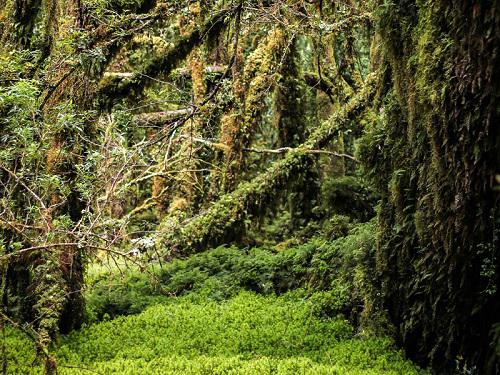Gerardo E. Soto
Understand the links between the Magellanic woodpecker and the changes in the landscape structure and quality in the Valdivian Temperate Rainforest.

Inside the Valdivian Rainforest.
Valdivian temperate rainforest of Chile, is one of the 32 world’s forest biodiversity hotspots, and has been reduced to just 30% of its original extent over the last two centuries. The loss of forest by clearing for cattle and agriculture, extraction for firewood and replacement for monoculture plantations, has resulted in a mosaic of forest patches with different characteristics. The loss of these unique forests directly threatens the community of species, but no studies have assessed the impact of deforestation on wildlife in a regional scale.

A male Magellanic woodpecker with a GPS attached on his back.
My aim is to understand the links between an umbrella and indicator species, the Magellanic woodpecker, and changes in the landscape structure and quality of the Valdivian Temperate Rainforest. Specifically, I want to understand how different matrix configurations and habitat quality gradients allow local populations to be safe from extinction. By constructing individual-based models in different landscapes, I will assess the contribution of deforestation and new commercial forest plantations to recent population declines and range shifts in the Magellanic Woodpecker. I will assess the required food to hold a territory in different fragmented and non-fragmented landscapes with the use of fine-grained GPS movement data and high-resolution satellite imagery. Finally, I will model the entire population size and trends based on modelling optimal spatial arrangements of woodpeckers’ territories and landscape’ functional connectivity. The potential accuracy in population estimates, such as occurrence and density, from these proposed methods represent a significant advance in the understanding and conservation of these forest ecosystems. The estimated patterns for this umbrella species can be linked later to the community structure to monitor the condition/health of the Chilean Valdivian forests.
The results of my study will include the parameters to maintain a local woodpecker population. These parameters or threshold values are interaction values of forest area, forest species composition, forest senescence, forest age classes, patch size and distances, matrix configuration, among others. These will categorize the critical structures allowing woodpeckers’ occurrence and dispersal, which will need to be kept and protected.